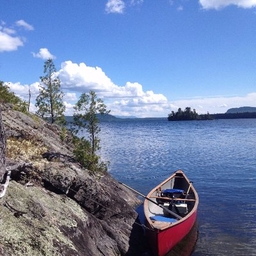
Articles
-
5 days ago |
nationalgeographic.com | Brian Handwerk
Summer is officially here, and it’s kicking off with an extreme heat dome that’s scorching much of the Central and Eastern United States. “A strong upper-level ridge parked over the eastern half of the country will continue to generate an extremely dangerous heat wave this week,” the National Oceanic and Atmospheric Administration's National Weather Service warns.
-
2 weeks ago |
nationalgeographic.fr | Brian Handwerk |Kenneth Garrett
Sous l'Égypte ancienne, des monuments publics grandioses ont été érigés pour célébrer les pharaons. Mais les édifices ne s'élevaient pas tous vers le ciel : les mausolées souterrains sont autant de trésors d'architecture à l'abri des regards. C'est dans la Vallée des rois, sur la rive ouest du Nil et près de Luxor, qu'ont été placés les tombeaux des pharaons du Nouvel Empire (1539-1075 av. J.-C.), de Thoutmôsis I à Ramsès XI.
-
1 month ago |
nationalgeographic.fr | Brian Handwerk |Kenneth Garrett
Les Égyptiens de l'Antiquité construisaient des monuments publics massifs pour leurs pharaons. Mais ils consacraient également du temps et des fortunes à la création de mausolées souterrains cachés. La collection la plus célèbre de tombes aussi élaborées, la Vallée des Rois, se trouve sur la rive ouest du Nil, près de Louxor.
-
1 month ago |
nationalgeographic.fr | Brian Handwerk |Joel Sartore
Depuis des années maintenant, les chiens de sauvetage sont mobilisés pour aider à trouver des survivants parmi les décombres des sites de catastrophes naturelles ou d’accidents. Les chiens sont en quête d’une respiration humaine, explique Sinead Imbaro, policière et formatrice militaire pour l’unité cynophile de police aux États-Unis, à News Nation. S’ils trouvent quelqu’un, ils aboient pour alerter les secours.
-
2 months ago |
nationalgeographic.com | Brian Handwerk
The ancient Egyptians built massive public monuments to their pharaohs. But they also spent time and treasure creating hidden underground mausoleums. The most famed collection of such elaborate tombs—the Valley of the Kings—lies on the Nile's west bank near Luxor. During Egypt's New Kingdom (1539-1075 B.C.), the valley became a royal burial ground for pharaohs such as Tutankhamun, Seti I, and Ramses II, as well as queens, high priests, and other elites of the 18th, 19th, and 20th dynasties.
Try JournoFinder For Free
Search and contact over 1M+ journalist profiles, browse 100M+ articles, and unlock powerful PR tools.
Start Your 7-Day Free Trial →X (formerly Twitter)
- Followers
- 32
- Tweets
- 4
- DMs Open
- No

Training a puppy? Here's when they're able to learn key skills https://t.co/CL8bVjeluo via @NatGeo

Getting ready for Monday night! https://t.co/JxFrmvAgzI

Monkeys Make Stone Age Tools But Don't See The Point https://t.co/eVz9kKX0yl